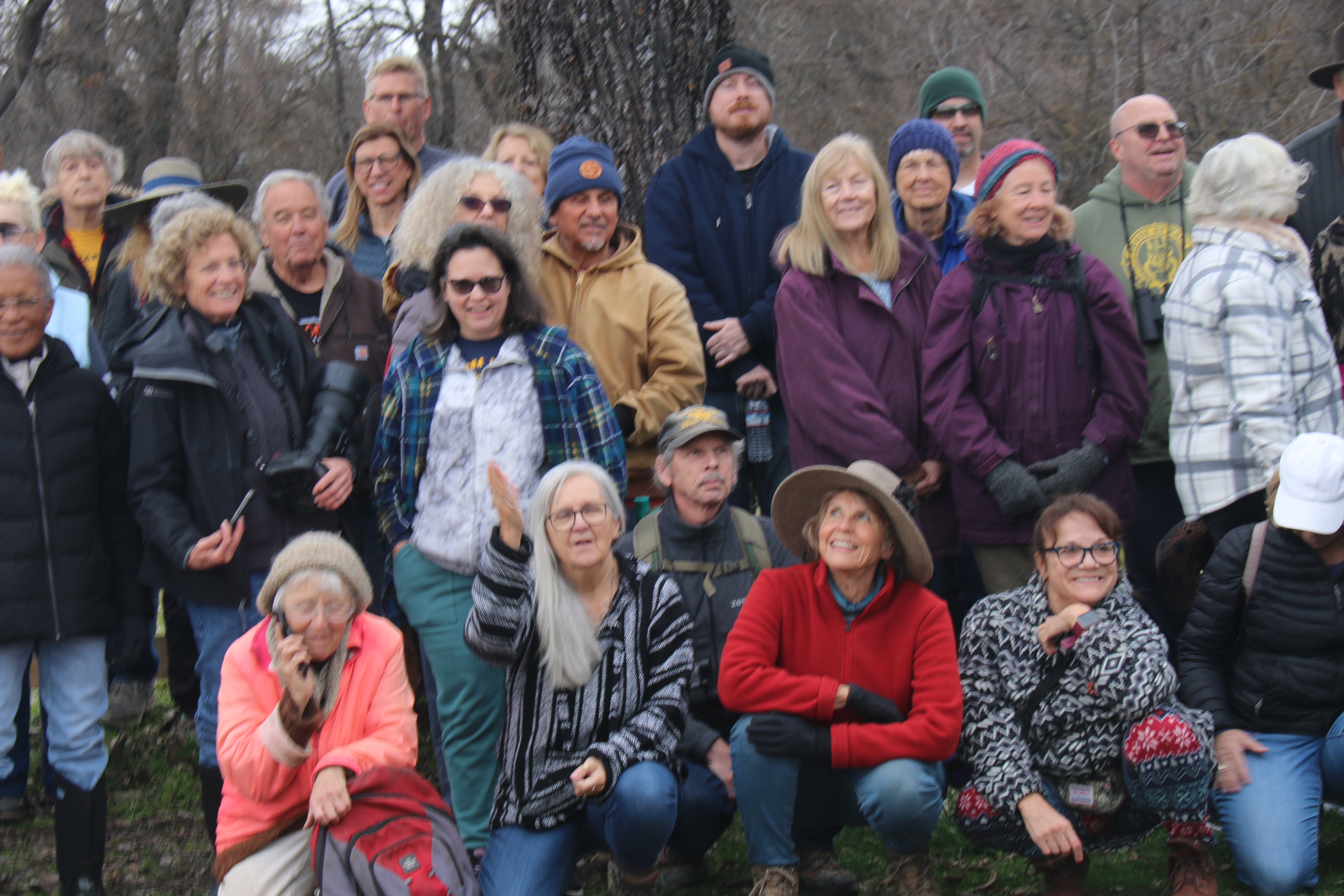


CLEARLAKE >> A faithful fan base defied greying clouds as nearly 150 assembled at Anderson Marsh State Historic Park for the First Day Hike, New Years Day, with family and friends lapping up fresh air in this the10th anniversary to commune with wildlife at the launch of 2025.
It is a signature feature of the Anderson Marsh Interpretive Association (AMIA), formed in 1984, after the State of California acquired the Park in 1982. “The main idea of this hike is to get people out into nature to start the year off right, in a healthy way,” said Henry Bornstein, a volunteer state park docent and board member of the Anderson Marsh Interpretive Association, a 501 3C nonprofit who led the way.
The primary objective of the Association has been to promote educational and interpretive activities at Anderson Marsh State
Historic Park. AMIA has played an important role in funding projects that the state would otherwise be unable to provide. These have included conservatory work, construction, trail work, interpretive displays, rehabilitation of facilities and historic objects.
Bornstein addressed hikers in the Marsh parking lot noting they had to be flexible because of recent rains. “Some of the system is presently under water so, cautioned Bornstein. “But we found a couple of useable routes. But the Dawa Qanoa’ana trail (the Southeastern Pomo language expression for, south way in front of me).
Bornstein explained the Marsh under the oversite of the State Park jurisdiction, was intended to protect the archeological sites. Previously the park had been planned for development. yet became a state park and includes a natural preserve, as well as two barns for artifact storage and the Anderson Ranch house. In 1885, Scottish immigrant Jonh Still Andrson arrived with his wife Sarah and six children.
After Anderson’s death in 1912, five of his children took over the ranch shifting the focus to cattle ranching. Anderson’s descendants lived in the original ranch house until the 1960s. The last of them, his daughter Mora lived on the ranch until 1966. The ranch house was built in three wings. The central segment dates from the 1860s, the parlor wing from the 1880s and the craftsman-style kitchen wing from the 1920s.
Bornstein noted there were two different hikes planned. The first was a little over a one-mile roundtrip, with low elevation going to the newly redeveloped Cache Creek. The second choice was a two-mile hike through the Blue Oak Woodlands, with some slight inclined hills, following the Lewis Ridge Trail.
Also on hand was Gae Henrey, also an AMIA board member as well as a volunteer docent since 2010 as well as Bornstein’s wife. “This is an incredible park,” Henry said. “You can kayak here and see the marsh. She went on to explain her favorite spot now that she uses a walker, is Cache Creek and explore the oxbows, the u-shaped winding turns in the river channel is still present, despite the Army Corps of Engineers straightening out some turns in the 1960s. Hikers now, can get closer to observe wildlife.
“When I could walk unaided, I loved walking the Ridge Trail,” she said. “There’s a vernal pool (seasonal) serving as a breeding ground for various species of frogs,” she said. “But there’s a couple of wonderful trees up there called Woodpecker Grainery trees, where they store their acorns and guard them.”
As Henry recovers from recent surgery, she plans to lead hikes to Cache Creek that has a gravel surface and after a certain point the trail has a boardwalk that leads to the creek itself. “You go past a few oxbows which has wood ducks in them, and I run into river otters and native turtles,” she said. She also noted there were Grebes (diving birds) and they are plentiful in winter, spring and fall. “But in the summer, often migrate north. Many come down from the California Lakes in Oriville and Amador. Grebes are birds that run in the water, doing what is called rushing- running along the surface, flapping their wings, in order to get lift to fly.”
“And I live here because I’m into the birds and kayaking,” she added. “We live right across the creek. That’s why we fell in love with it.”
On duty that day was Park Ranger Trevor Irace. He has been with the State Parks since 2008 and in the Clear Lake Sector since 2017.
“This has been one of the largest turnouts for the First Day Hike in the state,” he said. He recalled the attendance once reached as many as 200. “Today, has been great, considering the weather has been off and on. We have a weekly digest the state puts out. …. And it usually has photos of the First Day Hike participants in the issue.”





